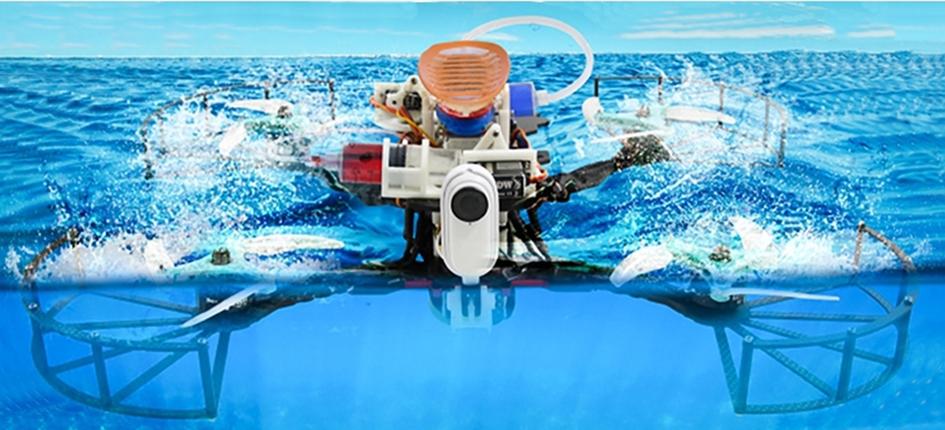Tokyo (SCCIJ) – A team of scientists from Swiss Federal Laboratories for Materials Science and Technology (Empa) has developed an extremely versatile robot vehicle alongside colleagues from London and Beijing. The unique drone can fly, dive, and ride on other moving objects.

The new drone with a fish-inspired suction disc hitchhikes on moving objects to save power and can quickly transit between air and water (© Beihang University / Science Robotics).
Special features
The robot is capable of switching from an underwater drone to an aerial vehicle in less than one second. This high speed is based on a new propeller design – making this transition between the different mediums faster than most prior aerial-aquatic robots.
The machine also features a special device to hook on wet or dry moving objects to significantly reduce its power consumption. Such a versatile robot will be suitable for open-environment aerial and aquatic surveillance research.
For example, these capabilities allow biological and environmental monitoring in marine ecosystems such as surveying pollution in the open sea, the scientists at Beihang University, Imperial College London, and Empa pointed out in a study published in Science Robotics.
Extended reach
Untethered drones can help research expeditions and wildlife surveys in expansive or remote environments, but some constraints remain. For example, untethered drones are not the best choice for lengthier missions because they have no external power sources to fall back on if their battery fails.
To overcome this limitation, the Swiss robot features a suction pad inspired by remora fish – a family of species known for their adhesive discs, which help them catch a ride on marine creatures including whales and sharks. The remote-controlled robot’s disc can stick to wet and dry surfaces with different textures, even on moving objects.
Saving energy
During tests the robot hitched a ride on a swimming host vehicle to obtain seabed images of hermit crabs, scallops, and seaweed. The hitchhiking robot consumed almost 20-times less energy than it would have using self-propulsion. The outdoor experiments proved that the robot can hitchhike, record video during air-water transitions, and perform cross-medium retrieval operations in freshwater as well as saltwater environments.
“Our study shows how we can take inspiration from the adhesion mechanism of the Remora and combine it with aerial robotics systems to achieve novel mobility methods for robotics”, said Mirko Kovac, who heads both Empa’s Materials and Technology Center of Robotics and the Aerial Robotics Lab at Imperial College.
Text: SCCIJ with material of Empa





























